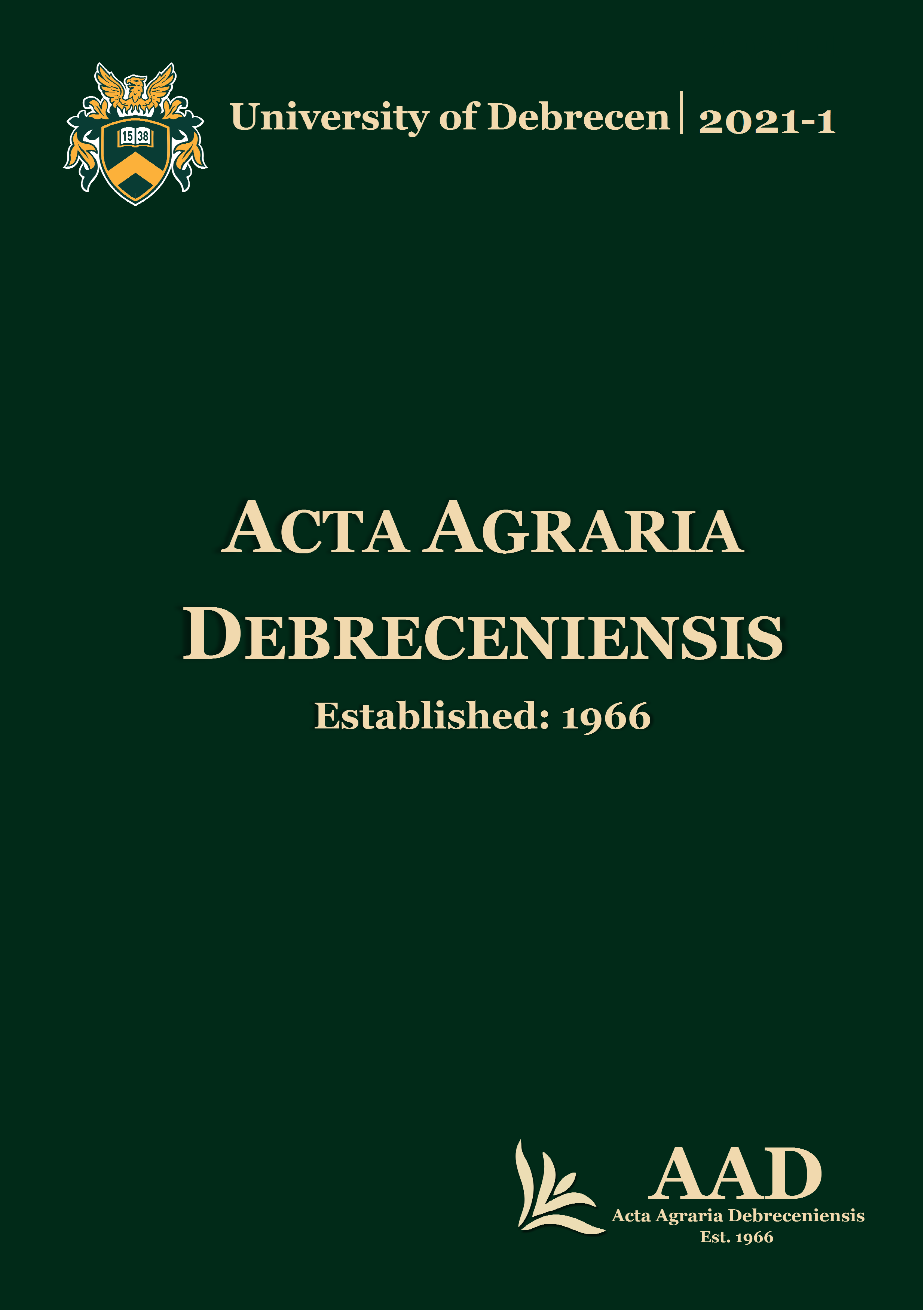Seedling morphology of different wheat genotypes at early stages under hydrocultural conditions
Authors
View
Keywords
License
Copyright (c) 2021 by the Author(s)

This work is licensed under a Creative Commons Attribution 4.0 International License.
How To Cite
Accepted 2021-01-11
Published 2021-06-01
Abstract
Consuming “sprouted seeds” is one of the most important factors of a healthy diet. An experiment was conducted in the University of Debrecen, Research Centre of Nyíregyháza (Hungary) in 2014 to analyse some morphological traits of four winter wheat genotypes (Triticum aestivum L.) and one spelt (T. spelta) variety. Our results showed that the spelt wheat variety “Franckenkorn” could maintain higher root length throughout the experimental period. On average, both “Perbetei” and “Franckenkorn” varieties could maintain higher root number compared to the other varieties. The extensive breeding line “1401 HK” had the highest shoot length throughout the whole experiment, being significantly higher than the landrace variety “Perbetei” and both of the varieties “KG Bendegúz” and “KG Kunhalom”. It could be concluded that “KG Bendegúz” cultivar and “Perbetei” landrace seem to be the most suitable for aquaculture techniques. In addition, “1401 HK” breeding line can be the most suitable for the production of juice since the minimal required shoot length (12 cm) was achieved within the shortest period of time after sowing (9 days). This breeding line and “Franckenkorn” can also be suitable for production of “wheatgrass”, because it is consumed without roots. Further research is needed to evaluate nutritional values of these genotypes.

 https://doi.org/10.34101/actaagrar/1/8301
https://doi.org/10.34101/actaagrar/1/8301